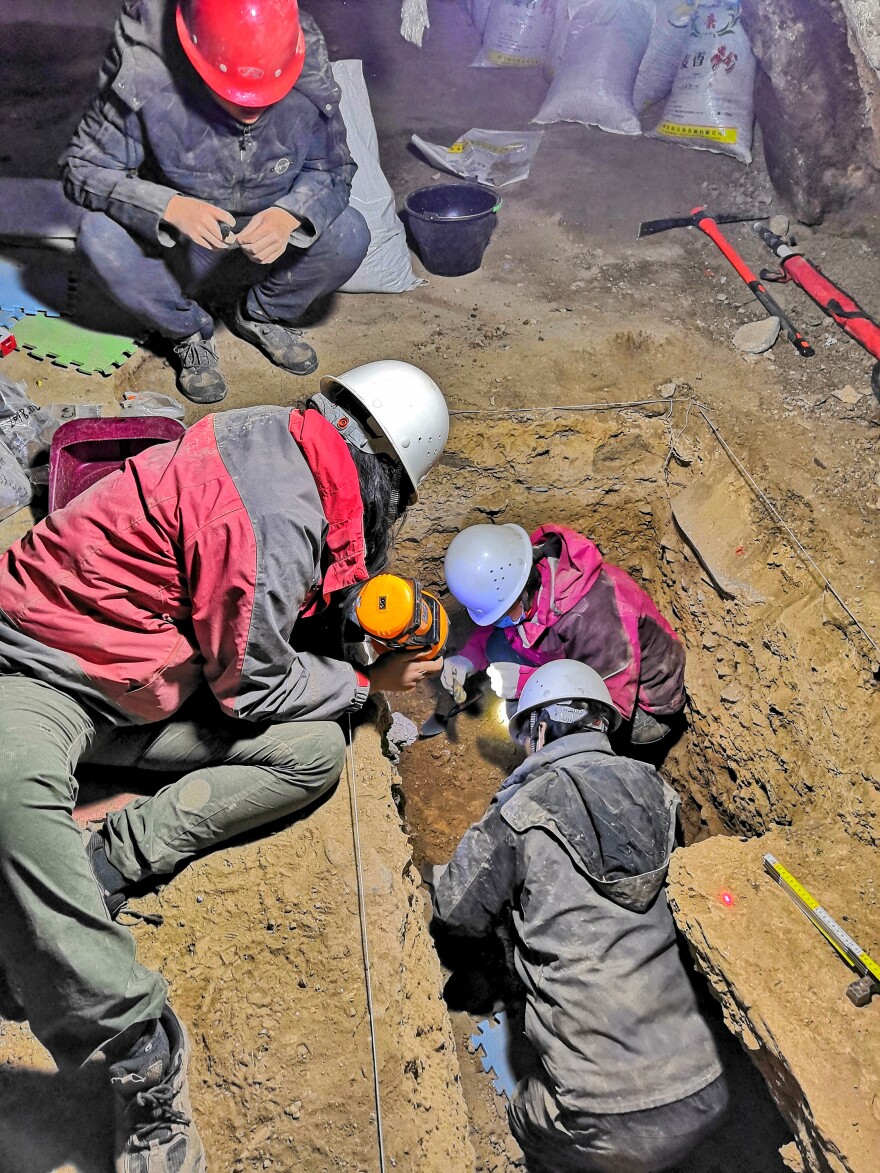The jawbone of a little-known form of ancient human has been discovered in western China. Scientists say these people lived as long as 150,000 years ago, and they were part of a group called Denisovans.
The Denisovans are a mystery. Up until now, their only remains — a few bone fragments and teeth — came from a cave called Denisova in Siberia.
In 2010, scientists concluded from those fragments and their DNA that Denisovans were slightly different from us — Homo sapiens — and slightly different from Neanderthals, but that they lived contemporaneously. In short, they were a third kind of human.
What those researchers didn't know in 2010 was that 30 years earlier, a Tibetan monk had found part of a jawbone in a cave on the Tibetan Plateau, home of the Himalayas. He gave it to the Sixth Living Buddha, a holy man there, who passed it on to scientists. They started studying the piece of bone nine years ago. Now they say that it, too, is Denisovan.
"The specimen is much more complete than anything else we know in the Denisova cave," says Jean-Jacques Hublin, from the Max Planck Institute in Germany and a member of a Chinese and European team that studied the jaw and its two remaining teeth.
"It's the first time that Denisovans are identified far away from the Denisova cave," he says.
The bone — half of the lower jaw or mandible — was found in a huge cave almost 11,000 feet up in the plateau. Chinese scientist Dongju Zhang of Lanzhou University in China says these archaic humans "successfully adapted to high-altitude, low-oxygen environments long before the regional arrival of modern Homo sapiens."
She also notes that there were tools and animal bones bearing cut marks in the cave. If those remnants were left by the Denisovans, it means they likely lived there for a while.
But the fact that some Denisovans would have lived in Tibet makes sense. Here's why: When scientists first examined DNA from the Denisovan bones in Siberia, they found many genes that modern humans also have. One of those genes we've inherited, and is common among Tibetans, gives people the ability to live at very high altitudes with low oxygen levels.

So apparently, some early Denisovans lived on the Tibetan Plateau a long time ago; the jaw is 160,000 years old. They developed the low-oxygen trait, and then at some point passed it on to humans.
"It's in the modern human gene pool because of interbreeding with Denisovans," says Matthew Tocheri, a paleoanthropologist at Lakehead University in Canada, who studies early humans in Asia. "And now this particular jaw that's been identified as Denisovan is actually from the Tibetan Plateau, so it connects these dots."
Tocheri says the discovery reinforces the growing realization that the main river of human lineage was split into numerous tributaries. And some were pretty far off the mainstream, like the 4-foot-tall Homo floresiensis, or Hobbit. It lived as recently as 50,000 years ago on a remote island in Indonesia, but it had numerous apelike characteristics reminiscent of creatures that lived millions of years ago.
"It wasn't that long ago that humans were way more diverse than they were today," says Tocheri, "and we carry on some of that diversity because we ... have some of these genes that survive in us." And sometimes, like the low-oxygen gene, they make us more adaptable.
"Clearly, modern humans have reaped the benefit of these adaptations that they acquired," Tocheri says.
The research on the new find appears in the journal Nature.
Copyright 2021 NPR. To see more, visit https://www.npr.org. 9(MDAxODc1ODA5MDEyMjg1MDYxNTFiZTgwZg004))




